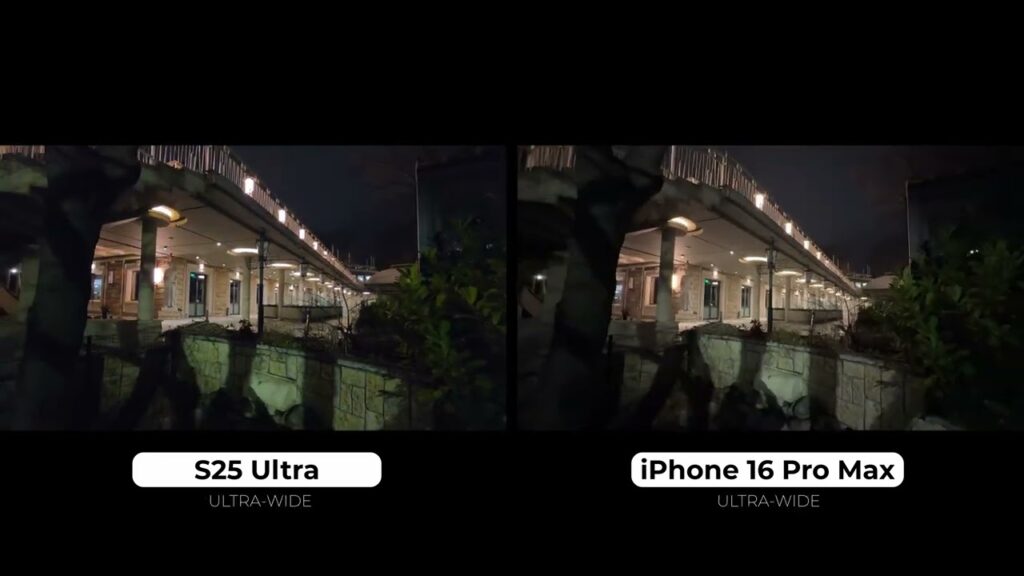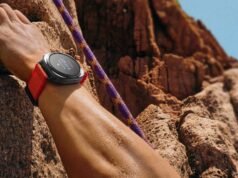capturing stunning images after sunset presents a unique set of challenges. Night Photography has become a critical benchmark for evaluating the true capabilities of flagship devices, where every pixel counts and subtle differences can make all the difference. Recently, a detailed comparison between the iPhone 16 Pro Max and the Samsung Galaxy S25 Ultra during low-light conditions has ignited conversations among photography enthusiasts. The focus of this review is on how each device handles Night Photography, with a particular emphasis on revealing a recurring issue in the Galaxy S25 Ultra that could influence your choice of smartphone.
As smartphone cameras evolve, manufacturers increasingly rely on sophisticated image processing pipelines to make up for the limitations of their small sensors. While both Apple and Samsung invest heavily in computational photography, the way each brand approaches Night Photography is markedly different. In our analysis, we delve into these differences, examining key aspects such as color reproduction, clarity, and the presence of image anomalies that can detract from an otherwise impressive photographic performance.
Understanding the Foundations of Night Photography
Before we delve into the specifics of our comparison, it’s important to understand how each device sets the stage for Night Photography. Both the iPhone 16 Pro Max and the Samsung Galaxy S25 Ultra are equipped with high-end sensors and advanced lenses, but their success in low-light conditions hinges on more than just hardware. Each phone employs extensive algorithmic processing to compensate for the inherent challenges of shooting in the dark.

Apple has long been recognized for its meticulously refined image processing pipeline. With over a decade of experience under its belt, the iPhone 16 Pro Max leverages a powerful neural engine that processes images in real time, adjusting exposure, color balance, and noise reduction to deliver clear, vibrant photos even when the light is scarce. This technology is particularly beneficial for Night Photography, where capturing the subtle nuances of a starlit sky or the deep blues of a nocturnal scene requires precise calibration.

In contrast, Samsung’s approach with the Galaxy S25 Ultra centers around its ProVisual Engine. This engine performs a similar role, optimizing images during capture and before presenting the final output. However, during our analysis of Night Photography images, we noticed that while the Galaxy S25 Ultra offers a rich level of detail, it sometimes struggles to maintain the same level of color accuracy and clarity as the iPhone 16 Pro Max. In certain scenarios, the Galaxy S25 Ultra’s processing seems to push the limits of saturation and smoothness, leading to an almost hyper-realistic appearance that might not always align with the true essence of the scene.
Comparing Night Photography Results: A Closer Look
To evaluate these differences, controlled tests were conducted under similar low-light conditions. When capturing images of the night sky, both devices delivered commendable results. The iPhone 16 Pro Max, however, produced photos with a naturally deep blue hue and crisp clarity, while the Samsung Galaxy S25 Ultra captured a higher number of stars and more intricate details due to its advanced 200MP main sensor.

Despite these strengths, the Galaxy S25 Ultra revealed a noticeable anomaly in its Night Photography results. In one set of images, while the ultra-high resolution allowed for the capture of numerous stars, the overall color of the sky appeared washed out, leaning toward a grayish tone instead of the expected deep blue. This suggests that Samsung’s image processing may be encountering difficulties in balancing ambient light levels with the desired nighttime ambiance.

Another critical observation during these Night Photography tests was the presence of a recurring hazy pattern in the Galaxy S25 Ultra images. This pattern, initially mistaken for a natural element like clouds, became more evident upon further examination and comparison with images from the iPhone 16 Pro Max. The issue was not isolated; similar patterns appeared across several shots taken with the Galaxy S25 Ultra in its dedicated Night mode. According to reports, Samsung has acknowledged this anomaly, citing that in a limited number of cases, images captured in Night mode may appear blurred due to the current processing approach—a problem they intend to address with an upcoming software update.
The Role of Dedicated Night Modes in Enhancing Low-Light Photography
A noteworthy distinction between the two devices lies in their approach to Night Photography modes. The iPhone 16 Pro Max does not offer a dedicated Night mode; instead, it relies on its well-honed image processing pipeline to optimize shots taken in low light. Users simply point the device at the sky and capture the image, with the system automatically handling a default 3-second exposure—long enough to gather ample light while minimizing blur. For enthusiasts willing to experiment, the exposure can be extended further, albeit with the need for a steady hand or tripod to ensure sharpness.

Samsung, on the other hand, has integrated a specialized Night mode within the Galaxy S25 Ultra’s Camera app, tucked away under an additional “More” menu. This mode offers a similar 3-second exposure, with an option to extend up to eight seconds for capturing even more detail. While the concept behind this dedicated mode is to enhance Night Photography by allowing more light to be captured, the practical outcomes have been mixed. Although the extended exposure can reveal an impressive array of stars and details, it also appears to exacerbate the processing anomaly mentioned earlier.
Moreover, the issue of image anomalies in the Galaxy S25 Ultra was further underscored when testing scenarios involving varying levels of ambient light. In one series of shots, a brightly lit palm tree set against the night sky was captured by both devices. The iPhone 16 Pro Max maintained a natural, well-balanced color tone in the sky, whereas the Galaxy S25 Ultra’s image exhibited not only the hazy pattern but also blotchy artifacts that undermined the overall image quality.
Despite these shortcomings, the Galaxy S25 Ultra did manage to maintain star visibility even in challenging lighting conditions—a testament to its potent sensor capabilities. However, the trade-off between capturing detailed stars and ensuring a clean, accurate image remains a critical point of contention.
Potential Software Fixes and Future Prospects
The recurring issues in the Galaxy S25 Ultra’s Night Photography outputs raise important questions about its current image processing approach. Samsung’s acknowledgment of the problem suggests that a solution is on the horizon, with an imminent software update expected to mitigate the hazy pattern and improve overall image clarity. Given that these early comparisons were conducted under sub-optimal conditions—without the use of tripods or controlled environments—it is reasonable to anticipate that real-world performance will improve significantly by launch.

This development highlights an important aspect of Night Photography: the dynamic interplay between hardware and software. While the Galaxy S25 Ultra is equipped with a formidable sensor and a high-resolution camera system, its image quality in Night Photography hinges on how effectively its software can process and refine raw data under challenging conditions. A forthcoming update could potentially align its performance more closely with that of the iPhone 16 Pro Max, which currently enjoys a more refined image processing pipeline.
For users who prioritize Night Photography, the final verdict on the Galaxy S25 Ultra will depend on whether the promised software enhancements can rectify the present issues. If successful, the device will not only capture a greater number of stars but also deliver images that are clean, natural, and true to life—qualities that are essential for any serious low-light photography enthusiast.
Weighing the Pros and Cons of Night Photography Performance
As we compare the Night Photography capabilities of the iPhone 16 Pro Max and the Samsung Galaxy S25 Ultra, it becomes clear that both devices offer distinct advantages. The iPhone 16 Pro Max, with its mature and refined image processing, produces consistently clear and color-accurate images, making it a reliable choice for those who demand natural, high-quality Night Photography. In contrast, the Galaxy S25 Ultra, despite its potential for capturing greater detail, is currently hampered by processing anomalies that detract from the overall image quality.
For users who view Night Photography as a critical factor in their smartphone choice, this comparison underscores the importance of a balanced approach. While the Galaxy S25 Ultra excels in sensor capabilities and detail capture, the iPhone 16 Pro Max delivers a more consistent and aesthetically pleasing experience in low-light scenarios. Ultimately, the decision may come down to personal preference—whether you value the richer detail offered by the Galaxy S25 Ultra or the cleaner, more reliable output of the iPhone 16 Pro Max.
In the rapidly evolving world of smartphone Night Photography, it is essential to consider both current performance and future potential. As software updates roll out and further optimizations are implemented, the gap between these two devices could narrow. However, for now, the clear advantage in image clarity and color fidelity seems to belong to the iPhone 16 Pro Max. Meanwhile, Samsung’s Galaxy S25 Ultra remains a compelling option for those who are willing to overlook its present flaws in exchange for its advanced sensor technology and innovative features.
In conclusion, the comparison of Night Photography between the two flagship devices highlights a crucial trade-off. While both the iPhone 16 Pro Max and the Samsung Galaxy S25 Ultra are equipped to handle the challenges of low-light photography, the refined image processing of the iPhone gives it a notable edge. The Galaxy S25 Ultra shows promise, particularly with its ability to capture minute details, but must overcome current software limitations to fully impress Night Photography enthusiasts.
As further updates are released, it will be interesting to see if the Galaxy S25 Ultra can bridge this gap and offer a truly competitive low-light photography experience for users around the world.






